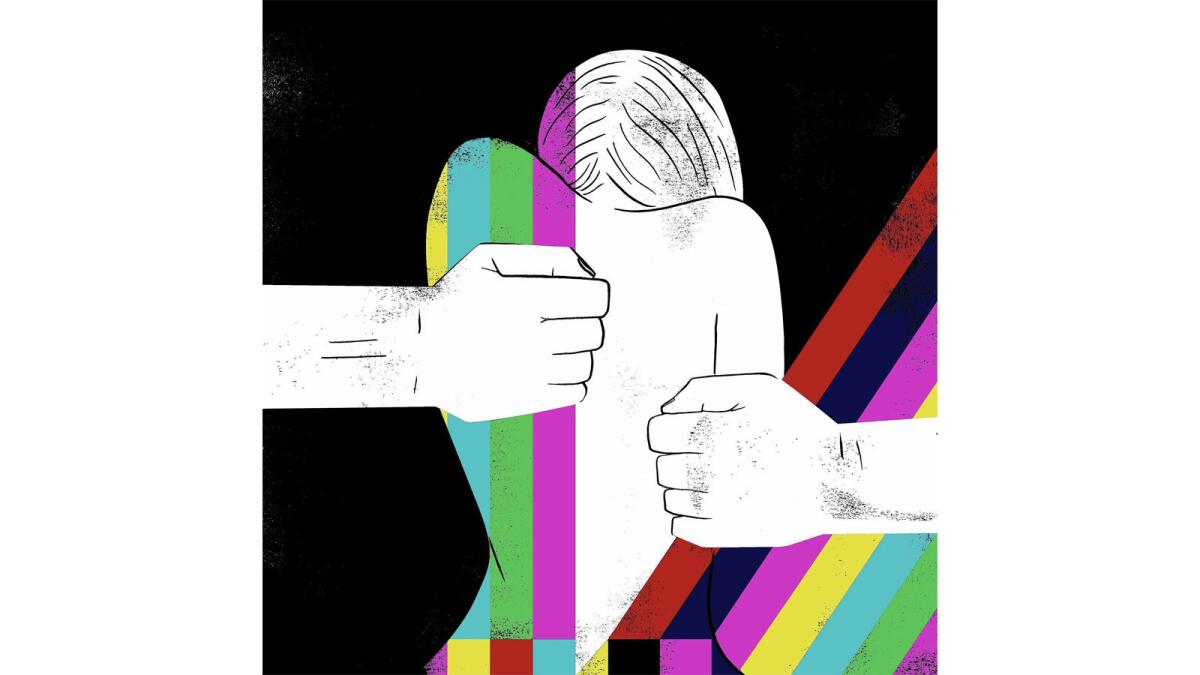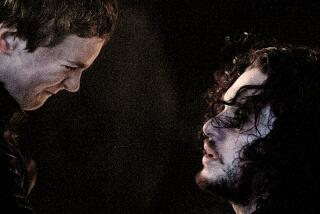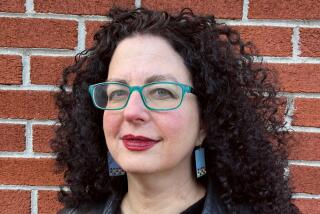TVâs alleged ârape glutâ may just be a more reflective reality

Whether we like it or not, brutal and precisely detailed violence is being used to explore the human condition. Demanding an exemption for rape turns rape into something other than a violent crime and undermines all the work activists have done for years.
After avoiding the subject for much of its lifetime, television has begun featuring stories that include rape. And many people are not happy about it.
With television now functioning as much national encounter group as entertainment, any act of violence or misfortune befalling a major character is immediately followed by a cacophony of anguish and/or rage on social media. But none, not even child murder, sparks as much emotional fury and deep thought as rape.
Once upon a time, the assault of a main character was wreathed in solemnity, heralded by disclaimers and intimations of âa very important episode.â Lately, however, shows as thematically diverse as âThe Americans,â âScandal,â âOutlander,â âGame of Thrones,â âDownton Abbey,â âHouse of Cardsâ and âMad Menâ have used it as either a real-time plot point or a defining bit of back story.
Few of which have escaped protest. This spring, the midseason rape of Sansa Stark (Sophie Turner) so offended some âGame of Thronesâ fans that they called for a boycott. The reaction, which included U.S. Sen. Claire McCaskill (D-Mo.) tweeting that the âdisgustingâ scene meant she was âdoneâ with the show, sparked yet another round of essays, columns, tweets and blogs about what is now being referred to as the ârape glut.â
Indeed, the âGame of Thronesâ commentary had barely died down when âOutlander,â criticized during its first season for the frequency of scenes in which its heroine was nearly raped, ended this season with the rape of its hero, Jamie Fraser (Sam Heughan), sparking a whole new round of criticism, mostly targeting the length and detail of the depiction.
And it isnât just cable. Even some of the most deeply devoted âDownton Abbeyâ fans still havenât forgiven last yearâs rape of beloved Anna Bates (Joanne Froggatt) by a visiting servant.
Froggatt won a Golden Globe for her performance and used her acceptance speech to assure survivors of rape that they were not alone, but many felt Annaâs rape was unnecessary, manipulative and reflective of much larger problems, including but not limited to rape being used for shock value, sadistic titillation or, even more deplorably, to remind female characters, and by extension the audience, that no matter how far they have come, women remain vulnerable in this very specific way.
Yet all these objections come at a time of renewed activism around rape, which inevitably focuses on the crimeâs frequency â 1 in 6 American women is the most oft-quoted statistic, with the inevitable caveat about rape being the most underreported major crime.
So to truly mirror the horrific reality of rape in America, even more female characters would need to experience it.
Certainly there are instances in which rape is handled badly or used to push ratings, just as there are examples of violence against children being handled badly or to push ratings. But there are also plenty of examples of rape being used to explore the precarious role of women in certain societies and/or their ability to overcome hardship. Shows such as âMad Menâ and âGame of Thronesâ have used marital rape to remind audiences that a dark alley and a stranger are not required for it to be a crime. Tina Feyâs remarkable series âThe Unbreakable Kimmy Schmidtâ is, possibly, the worldâs first rape-survivor comedy.
Part of an audienceâs job is to let writers know when things are revelatory and when they are objectionable, but in the now-inevitable angry reaction to a characterâs rape there are troubling echoes of the long-held, damaging belief that rape is the worst thing that can happen to a woman. That sexual violation is, as the Victorians believed, a fate worse than death.
After all, women, men and children die on television every day, in depraved specificity and disturbing anonymity. Fans of âGame of Thronesâ have watched all manner of physical brutality visited upon male and female characters: Jaime lost a hand; Theon spent most of an entire season being tortured and then lost his penis; characters are routinely flayed.
Violence fills all forms of entertainment; the television landscape is littered with those tortured, dismembered, eaten alive, scarred and stricken by their fellow mortals (and a few supernatural creatures) in every manner imaginable. âHannibal,â which continues to be a criticsâ darling, fetishizes murder, torture and cannibalism to the point of obvious eroticism.
One can certainly argue, and many have, that there is too much brutality in general on scripted television. But television is done with being dismissed as a banal house-trained purveyor of predictable entertainment; increasingly its stories are not there to soothe but to startle and provoke. (Which, in fact, it always has done. As many writers, including Norman Lear and Steven Bochco can attest, if people arenât protesting, youâre not trying hard enough.)
Whether we like it or not, brutal and precisely detailed violence is being used to explore the human condition. Demanding an exemption for rape turns rape into something other than a violent crime and undermines all the work activists have done for years.
Fighting long-held beliefs, survivors and their supporters argued that their inevitable pain and fear should not include self-recrimination, because rape is not the product of misread desire or temporary loss of control. The term âvictimâ became âsurvivorâ as women demanded that society stop seeing them as âruinedâ or defined by sexual assault.
Numerically, the depiction of rape on television is much closer to reflecting reality than, say, death by terrorist, serial killer, rogue CIA agent or the many clever murderers that fuel our detective series. To excise it from television means ignoring an outrageous experience shared by millions and a reality that shapes the lives of virtually every woman.
The rape of Sansa, though disturbing to watch, was shocking mainly because it took so long to occur. Sansa has spent almost the entire series learning that the path of the princess is, more often than not, one of peril and pain.
Like millions of women for thousands of years, Sansaâs life has never been her own. Yet despite being engaged to a psychopath and then wed to his kindly but still-troubled brother, despite drawing the unwanted attention of several other twisted male characters, Sansa avoided rape until her wedding night of her second marriage.
As with Daenarys (Emilia Clarke) and many of their historical counterparts, Sansa was forced into marriage for reasons of politics, family power and personal survival. If plot is going to explore the lives of women, particularly in historical context or times of war, rape is going to be part of the picture. âClose your eyes and think of Englandâ was not originally a punchline about frigidity; it was a comment on the grim realities of a certain kind of marriage.
The changing landscape and mores have allowed for more graphic acts of every kind on television, and the notion of a ârape glutâ is, in part, an issue of suddenness. With the notable exception of âLaw & Order: Special Victims Unit,â rape has, until recently, occurred rarely on television. When Gemma (Katey Sagal) was raped in Season 2 of âSons of Anarchy,â it was a very big deal that drove the plot of the entire season. When psychiatrist Jennifer Melfi (Lorraine Bracco) was raped on âThe Sopranos,â it irrevocably changed her relationship with Tony.
Now, however, rape occurs and the story moves on. Because â and this is important â female characters are not defined by it. Indeed, more often than not, they are defined by their ability to overcome and survive.
It is not accidental that the shows that have come under fire feature some of the strongest female roles on television. Certainly there can be narrative laziness at work, not to mention covert sexism. Just as not every strong, complicated woman has experienced rape, not every complicated female character needs a rape in her history. A woman can be a dedicated Soviet spy, say, for many reasons including that she just really loves her job.
But a lot of women have been raped, under an incalculable number of circumstances, and that reality is only now being reflected on television, albeit often imperfectly.
Many objections involve context and presentation (or in the case of âGame of Thrones,â sheer regularity). The near-rapes of Claire (Caitriona Balfe) in âOutlanderâ often involved her bent over a table, breasts perfectly framed by her low-cut Highlander neckline, an image that queasily evoked far too many consensual sex scenes on cable. (Over the table or against a wall are positions favored by many television writers, which is troubling in and of itself.)
More exasperating is the essential impact of rape on many of the narratives. In âDownton Abbey,â Annaâs rape was quickly hijacked by concerns about her husband. Whatever emotion she might be experiencing paled in comparison to the widespread worry that Mr. Bates had been driven to kill her attacker.
This anxiety that a victimâs menfolk will be moved to murder is, in fact, one of many reasons rape remains an underreported crime, something a series would do well to explore rather than simply mirror. Television has the power to exploit but also to redress. Sexual violence is disgusting, often brutal and always horrific. Itâs also far too common.
When itâs depicted in any other way, then we have a real problem.
More to Read
The complete guide to home viewing
Get Screen Gab for everything about the TV shows and streaming movies everyoneâs talking about.
You may occasionally receive promotional content from the Los Angeles Times.







